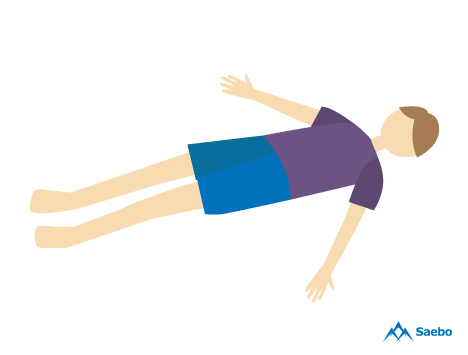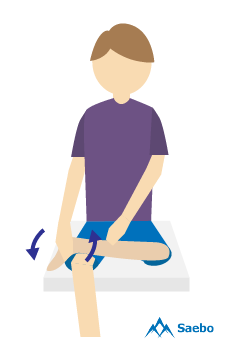Range of Motion Exercises for Spinal Cord Injuries


A spinal cord injury (SCI) is damage to any part of the spinal cord. This damage can lead to loss of function and sensation in the parts of the body served by the spinal cord below the location of the injury. Spinal cord injuries can have a catastrophic effect on a person’s life. Losing function in parts of your body can take away a lot of abilities and independence.
Damage to the central nervous system may be permanent, but through physical rehabilitation and exercise, many patients can redevelop some motor function and regain some level of independence. It is important to remain active after a SCI to assist with recovery and regain function.
Understanding Spinal Cord Injuries
When you think of someone with a spinal cord injury, your mind might immediately go to someone who is completely paralyzed from the neck down. This is called tetraplegia (or quadriplegia) and happens in severe cases when the injury occurs at the neck. There is also paraplegia, where someone is paralyzed from the waist down.
While these are both possible outcomes of an SCI, the prognoses can vary widely depending on the severity of the injury. Some patients are able to walk with or without adaptive equipment and live independently, while others may never regain motor function.
The severity of a SCI is referred to as the “completeness” and is classified as either “complete” or “incomplete.” If the injury is complete, then almost all feeling and motor function is lost. In an incomplete injury, some feeling and function remains below the affected area of the spinal cord. Someone with an incomplete injury has a better chance of regaining at least some motor function than someone with a more severe complete injury.
Most SCIs are caused by physical trauma. Motor vehicle accidents are the leading cause, followed by falls, acts of violence, and sports and recreation injuries. The causes of SCI can also be nontraumatic, like in the case of tumors, blood clots, and herniated disks.
Benefits of Range-of-Motion Exercises After SCI
If you have suffered a spinal cord injury it is important to keep moving anyway in order to prevent spasticity. Spasticity is when your muscles and joints become tight and stiff, which makes movement even more difficult. If left untreated, spasticity can lead to painful and uncontrollable muscle spasms in the extremities.
In order to prevent spasticity, it is important to improve your flexibility through passive range-of-motion exercises (PROM) and self range-of-motion exercises (SROM). Passive range-of-motion exercises are called as such because you do not exert any effort. Instead, an occupational therapist, physical therapist, or rehabilitation nurse helps you move your muscles and joints through their full range of motion. Self range-of-motion exercises are exercises that you can do by yourself. This will only be possible if you have partial or full use of your arms after your injury.
It is important to practice stretching exercises every day when recovering from a SCI in order to retain and improve your range of motion. If muscle tightness develops, it can limit your ability to perform daily activities like dressing yourself or moving to and from a wheelchair, which in turn limits your independence.
Passive Range-of-Motion Exercises for SCI
PROM exercises are done with a partner moving you through each motion. Your therapist will be able to give you guidelines for how how often to do each exercise and how many repetitions you should do based on your abilities. In general, stretching exercises should be held for 20–30 seconds and repeated 2–5 times.
As with any exercise program, please consult your healthcare professional before you begin. Stop immediately if any of the following exercises cause pain or harm to your body. It’s best to work with a trained professional for guidance and safety.
Shoulder Flexion and Extension

Stand at the patient’s side while they are seated. With one hand, hold onto the patient’s forearm, and with the other, hold onto and stabilize the elbow joint. Keeping their elbow straight, move the patient’s whole arm slowly up above their head, then back down. Alternatively, this exercise can be done with the patient lying down.
Shoulder Abduction

With the patient seated, stand behind them. Again, place one hand on their forearm and use the other to stabilize the elbow. Slowly move the arm upwards, making sure the palm is facing up once you go above shoulder height. Bring their arm above their head, and then slowly lower it back down.
Elbow Flexion and Extension

Place one hand on the patient’s wrist and the other on their upper arm. Slowly bend the elbow until their hand is touching their shoulder, then fully extend and straighten the arm down.
Wrist and Hand Flexion and Extension

With one hand, hold onto and support the patient’s wrist. With the other hand, curl their fingers into their palm and slowly stretch the wrist back. Next, allow the wrist to drop and the fingers to straighten. You may assist the patient with fully extending their fingers if they are unable to do so.
Hip and Knee Flexion

Start with the patient lying face up. Place one hand underneath their knee and use the other to stabilize the heel. Lift the knee, bending it towards the chest. Make sure you keep the foot and knee stay in a straight line with the hip, and do not twist during the exercise.
Hip Abduction

Start with the patient lying face up, and stand to their side. Place one hand underneath their knee and use the other to stabilize the heel. Keep the knee straight, and slowly move the leg toward you until it is at a 45-degree angle (approximately) with the other leg. Then slowly return the leg to its original position.
Ankle Rotation

With the patient’s knee straight, stabilize the ankle with one hand and place the other around the foot. Slowly turn the foot inward and outward.
Toe Flexion and Extension

Stabilize the patient’s foot just below the toes with one hand. With the other, grasp their toes and slowly move them forward and backward.
Self Range-of-Motion Exercises for SCI
Self range-of-motion exercises can be done without a partner, although when starting out you may want someone nearby to assist you until you are comfortable with the movements.
Neck Flexion and Extension

Bring your chin slowly in toward your chest. Hold, and then return your head upright. Next, keeping your chin tucked in, slowly pull it back, gently stretching the muscles in the back of your neck. Some patients should not do this exercise, so check with your therapist first. If your neck needs more support, you can hold onto it with your hands.
Supine Shoulder Stretch

Lie on your back with your palms turned up and arms extended straight out to your sides. Hold the positions as long as is comfortable.
Hip and Knee Bend

While seated or lying down, hold onto your leg underneath the knee and pull your leg toward your chest, keeping your knee bent.
Seated Hamstring Stretch

Sit facing a chair, bed, or other stable object that is the same height as your wheelchair. Place one leg on the object, keeping your knee straight. Do not bend forward as it will stretch your leg too much. Simply hold the position, alternating legs.
Ankle and Toe Stretch

While seated, cross one foot over your other leg. Using your hand, move the foot through its full range of motion, and then move each toe up and down.
Seated Back Stretch

While seated, rotate your head and shoulders while twisting your waist to each side of your body.
Lying on Stomach
Individuals with spinal cord injuries tend to spend most of their time sitting, which can tighten and shorten the muscles in the front of your hips. Lying on your stomach for at least a half an hour each day can help relax and stretch these muscles. If you are physically able, add to this stretch by pushing up with your upper body while leaving your legs straight.
Rehabilitation is Possible
Although it is impossible to heal completely from a spinal cord injury, rehabilitation can be the difference between regaining motor function or not. If you want to keep your independence after a SCI, then it is important to make physical activity a part of your daily life.
All content provided on this blog is for informational purposes only and is not intended to be a substitute for professional medical advice, diagnosis, or treatment. Always seek the advice of your physician or other qualified health provider with any questions you may have regarding a medical condition. If you think you may have a medical emergency, call your doctor or 911 immediately. Reliance on any information provided by the Saebo website is solely at your own risk.
All content provided on this blog is for informational purposes only and is not intended to be a substitute for professional medical advice, diagnosis, or treatment. Always seek the advice of your physician or other qualified health providers with any questions you may have regarding a medical condition. If you think you may have a medical emergency, call your doctor or 911 immediately. Reliance on any information provided by the Saebo website is solely at your own risk.



